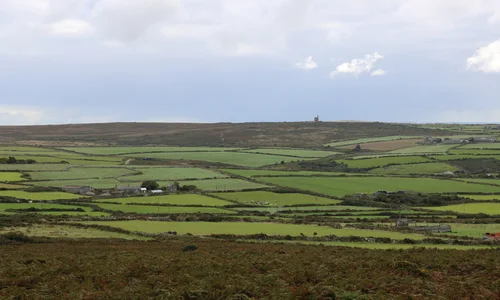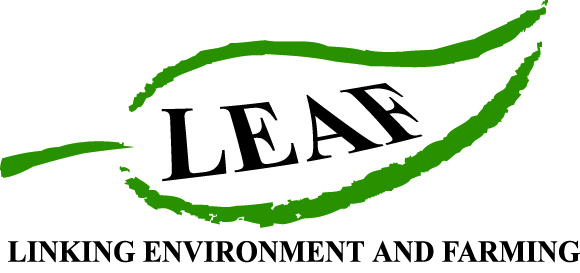 In their latest blog, Rebecca Davis from LEAF shares how important agriculture is to help manage carbon emissions and climate change, and how LEAF are working with them to support this:
In their latest blog, Rebecca Davis from LEAF shares how important agriculture is to help manage carbon emissions and climate change, and how LEAF are working with them to support this:
Farmers hold a unique position to be an innovative part of the solution to climate change, with farming having the potential to act as both a source and a sink for greenhouse gas (GHG) emissions.
There is a clear case for climate action; rising temperatures are driving natural disasters, weather extremes, environmental degradation, food and water insecurity, economic disruption, terrorism, and conflict. The challenges of increasingly extreme weather conditions being experienced by growers in Penwith are reflected at the global level in rising sea levels, biodiversity loss, melting icecaps and acidifying oceans. It is clear that “business as usual” is not going to be enough, and across sectors and regions it is apparent that now is the time to act.
Agriculture has a unique opportunity to act as a carbon sink and contribute to the global collective action for change, with the goal not just being sustainability but positive redress of issues including net emissions, biodiversity loss, and social inequality.
Agriculture, Forestry, and other Land Use is responsible for around a quarter of global greenhouse gas (GHG) emissions as a result of human activity. Agricultural emissions, including those from horticultural soils and nutrient management, are a major contributor to this. GHGs are gases in the atmosphere that affect the earths energy balance by trapping heat and warming the planet. Although there are 7 main GHGs, there are 3 key GHGs within the agriculture sector: carbon dioxide (CO2), methane (CH4), and nitrous oxide (N2O).
Carbon footprints are the total amount of GHGs released into the atmosphere due to our actions. They measure the total amount of carbon dioxide equivalent (CO2e) emissions that are directly and indirectly caused by an activity (or is accumulated over the life stages of a product). Results are reported as units of CO2 equivalent (CO2e), to represent all GHGs, including methane (CH4) and nitrous oxide (N2O) and not just CO2.
There are over 65 GHG calculators available in the UK; some are enterprise specific, some for the whole farm and others specific to market requirements. Choosing the one that is most appropriate to your business as a starting point is key. We recommend that you do some research around what data they require, and then assess how easy it is for you to access that data, especially using information that is already available. Ideally, once you have picked a tool that works for you, stick with it. This helps map your progress.
The key part to a carbon footprint assessment is generating a baseline and then working with the same tool to find out where you can make improvements, reduce emissions, and assess your progress year on year. Using a carbon footprint assessment can provide a focus on how to assess your efficiency, where you can save money, and where and how to reduce your GHG emissions. It evidences the improvements made and what steps and support are required to make further improvements. The UK farming industry is committed to deliver a net carbon zero goal by 2040, which will require a strong baseline to build on.
For over 30 years LEAF has been developing and promoting Integrated Farm Management (IFM), driving efficiencies and attention to detail. As we look to reduce emissions and increase carbon sequestration such an approach could not be more timely. IFM is a site specific, whole farm approach, made up of nine sections, and incremental improvements to each area which work together to address environmental, economic, and social sustainability across the entire farm business. An understanding of the importance of each section and the interactions between them is essential in reducing the carbon footprint of the farm and increasing carbon sequestration.
Through focusing on soil, water, energy, air and nature, the implementation of IFM offers a perfect opportunity to optimise the farms inputs and activities, in turn reducing emissions and environmental impact whilst also making productivity gains. Implementing practices within the LEAF Sustainable Farming Review management tool and Control Points in the LEAF Marque Standard v.15.0 help LEAF farmers to reduce their carbon footprint.
We recently produced a ‘Carbon In A Nutshell’ document, which you can read by clicking here, which gives more detail on how LEAF farmers are already heading in the right direction on this complex issue, and how we can help you to see it as an opportunity as well as a challenge. The latest edition of our IFM Quarterly magazine looks in more depth both at soil carbon and where this fits in with LEAF’s regenerative practices implemented through IFM. LEAF is also a partner in the international three year AgriCapture CO2 project which is looking at how carbon sequestration in farmland soils can be verified and potentially rewarded. For more info on this project, please contact rebecca.davis@leafuk.org.




